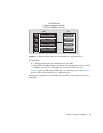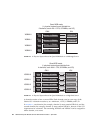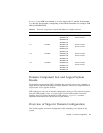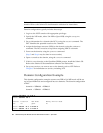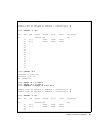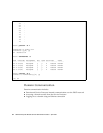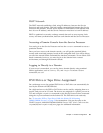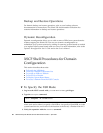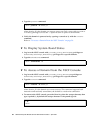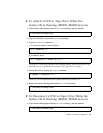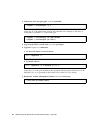
Chapter 4 Domain Configuration 55
DSCP Network
The DSCP network establishes a link, using IP addresses, between the Service
Processor and each domain. This link enables communication between the Service
Processor and domains, and the secure transfer of information. Each domain must
have its own IP address, and the Service Processor must have its own IP address.
DSCP is optimized to securely exchange control data such as error reports, fault
events, and time synchronization, between each domain and the Service Processor.
Accessing a Domain Console from the Service Processor
You can log in to the Service Processor and use the console command to access a
particular domain.
Once you have access to the domain console, you will get the standard Solaris
console with associated prompts, based on the configured shell. You will be able to
run all of the normal Solaris command-line interface commands. To run Solaris GUI-
based commands, however, you must log in to the domain from a remote
environment, not through the domain console.
Logging in Directly to a Domain
If your server is networked, you can log into a domain directly using standard
Solaris applications, such as telnet, rsh, and rlogin. To ensure a secure
connection, use ssh.
DVD Drive or Tape Drive Assignment
On a midrange server, the optional DVD drive or DAT drive can automatically be
used by the domain on PSB/XSB 00-0.
On a high-end server, the DVD or DAT drives can be used by assigning them to a
specific card port on an I/O unit. The devices are assigned to a specific port on an
I/O unit using the cfgdevice command on the Service Processor, then connected
using the cfgadm command on the Solaris OS. The DVD drives are read-only.
See “To Attach a DVD or Tape Drive While the Solaris OS Is Running
(M8000/M9000 Servers)” on page 59 for instructions. You can also refer to the
SPARC Enterprise M4000/M5000/M8000/M9000 Servers XSCF User’s Guide or to the
cfgadm(1M) and cfgdevice(8) man pages for additional information.



